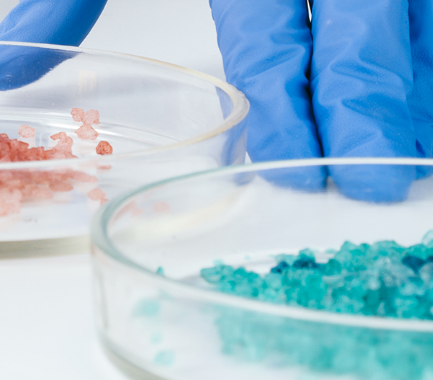Your contact
PENPET-Team - Hamburg

Christoph Meister
Sales
Tel. +49 (0) 40 - 675 7 99 30
sales@penpet.de
Get in touch with us.
Isopropanol
Isopropanol is a monohydric, non-cyclic alcohol that is used in a variety of ways in the chemical industry. The compound is mainly obtained by hydrating Propylene using acidic ion exchangers. In addition, it can be produced using catalysts by hydrogenation of acetone. Isopropanol occurs naturally in apples, bananas and many other fruits.
Isopropanol is mainly used as a disinfectant, cleaning agent and as a solvent for non-polar compounds. It is used in processing in the chemical industry and is contained in end products such as resins, fats, inks, paints, cosmetics, perfumes and pharmaceuticals. The compound is used as an antifreeze and for de-icing car windows and door locks. In addition, isopropanol is an important intermediate in the production of substances such as Isopropylamine, Isopropyl acetate or Aluminum triisopropanolate. The compound can also be used as a fuel.
Since we are registered with REACh, you can reliably source as well imported quantities of Isopropanol from us. We look forward to receiving your inquiry for an individual offer. Delivered as a liquid in tank containers, IBCs or drums.
CAS no. 67-63-0
EINECS no. 200-661-7
Molecular formula: C3H8O
Synonyms: isopropanol, isopropyl alcohol, secondary propyl alcohol, 2-propanol, propan-2-ol, propanol-2, i-PrOH, i-propanol, sec-propanol, petrolol, persprit, petrolol, propol, β-hydroxypropane, dimethylcarbinol, Alcohol isopropylicus, IPA
Areas of application: Used as a solvent, cleaning agent and disinfectant
More information
Isopropanol is the simplest substance from the group of monohydric, secondary alcohols. It consists of a propane compound with a hydroxy group in the middle carbon atom. This functional group gives isopropanol its alcoholic properties and ensures that the substance is easily soluble in water. In addition, it enables typical reactions such as the esterification of the substance and the formation of an aldehyde or a carboxylic acid in the course of oxidation. Together with its isomer n-propanol (also known as 1-propanol), which has a terminal hydroxy group, Isopropanol forms the group of propanols.
Isopropanol is a clear, colorless liquid that volatilizes easily and has a pungent sweet odor. With its characteristic note, the compound characterizes the smell of many disinfectants. When it evaporates, isopropanol leaves hardly any oily residue, making it a good cleaning agent for sensitive surfaces such as optical lenses, spectacles and electrical contacts.
Isopropanol is miscible in any ratio with water and some organic solvents such as acetone, ethanol, diethyl ether, benzene and chloroform. In water and with many other solvents, the compound forms azeotropic mixtures that have a common boiling point and can no longer be separated from one another by simple distillation.
Isopropanol reacts with strong oxidizing agents, aldehydes, amines, nitrogen oxides, carbonyl chloride and chlorine, generating a lot of heat. In contact with many metals, reactions also occur in which gaseous hydrogen is released. Uncontrolled reactions therefore represent a significant risk of explosion.
Isopropanol has a flash point below normal room temperature and is still highly flammable even in aqueous solutions. The highly volatile compound also forms explosive air-vapor mixtures with the ambient air. Because the gaseous isopropanol is heavier than air, its vapors can spread unnoticed along the ground and reach ignition sources in the vicinity.
If stored for a longer period of time, explosive peroxides can form as a result of a gradual reaction with atmospheric oxygen. Care must therefore be taken when processing isopropanol from stock. The compound must be kept away from open flames, hot surfaces, sparks, electrical devices and electrostatic charges.
Isopropanol is slightly toxic. Its toxicity is classified as higher than that of ethanol, but is well below that of methanol. Fatalities are rare even after ingestion of large amounts. Symptoms of poisoning can occur after ingestion, inhalation or absorption through the skin. Typical symptoms include drowsiness, headaches, nausea, vomiting, loss of temperature and a drop in blood pressure and cardiac arrhythmia. Long-term damage to the nervous system, liver and kidneys is possible. Inhalation can be narcotic and cause brain dysfunction. Adequate ventilation must therefore be ensured when handling isopropanol.
The compound causes irritation on mucous membranes and the eyes. Rinse skin and eyes thoroughly after direct contact. After swallowing isopropanol, rinse out mouth drink plenty water.
